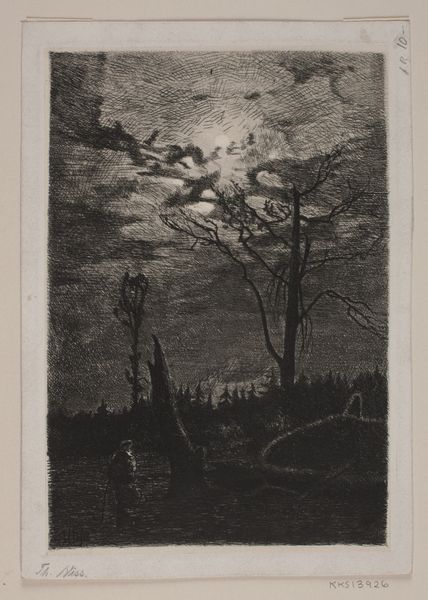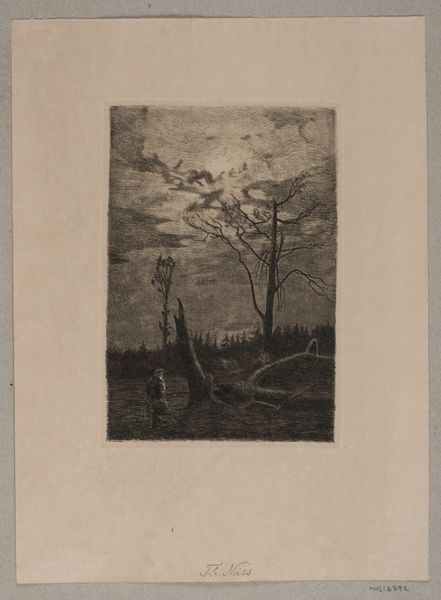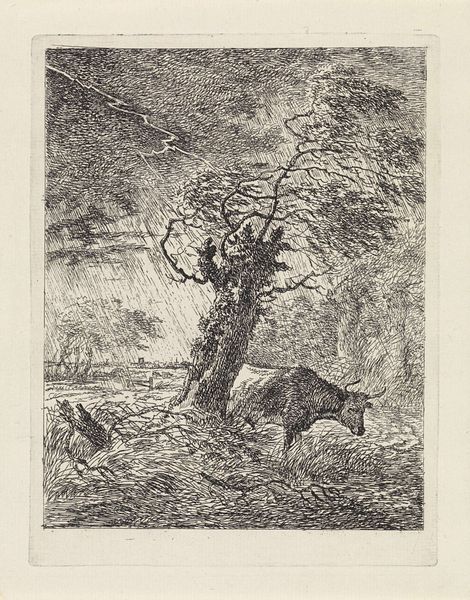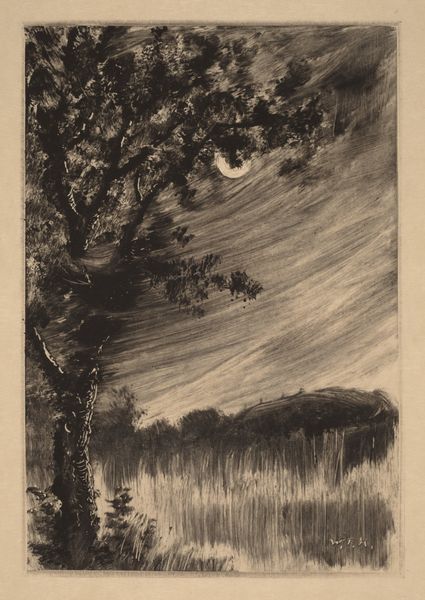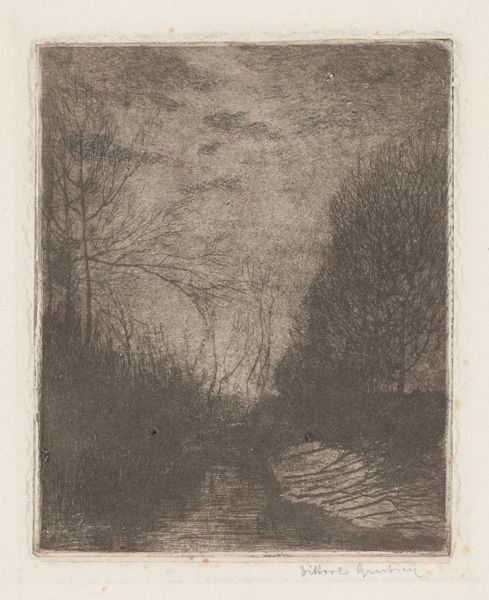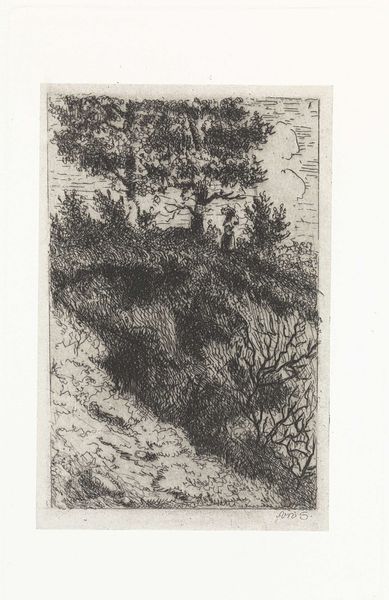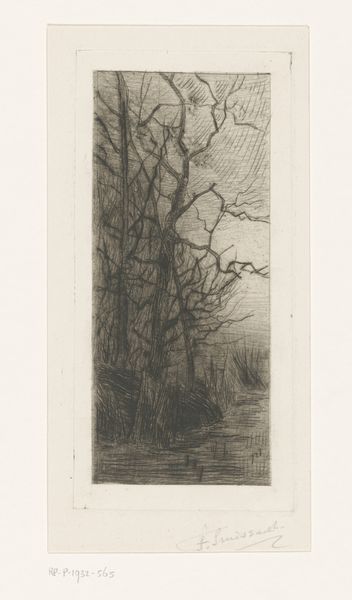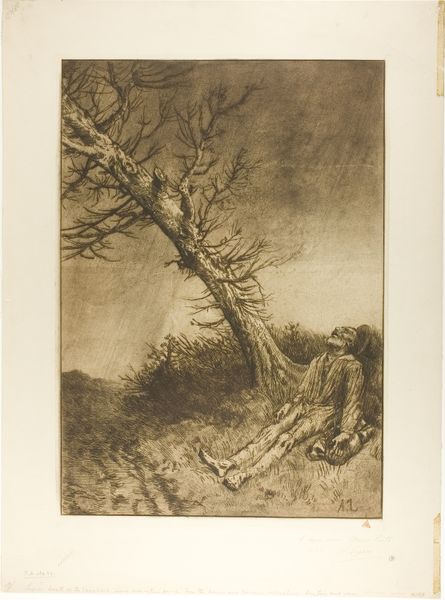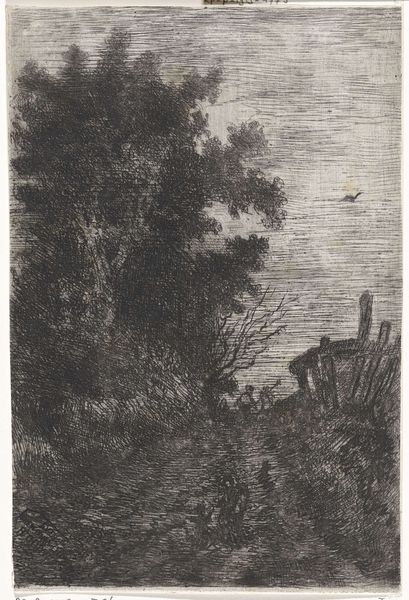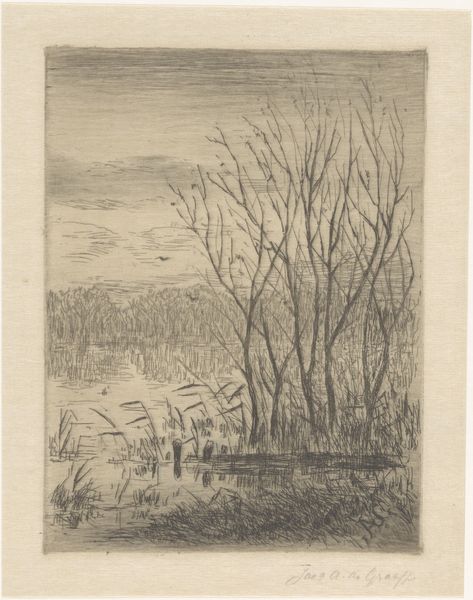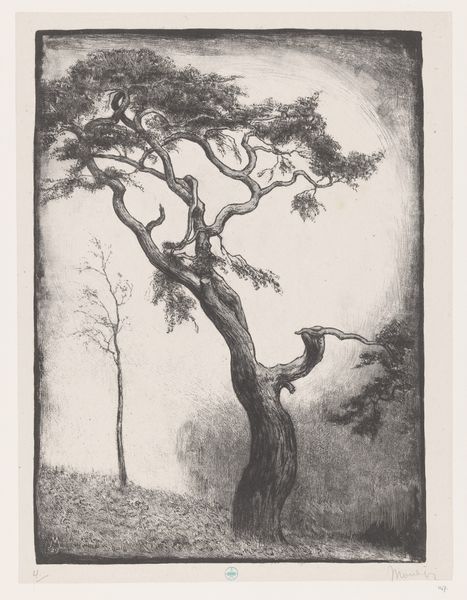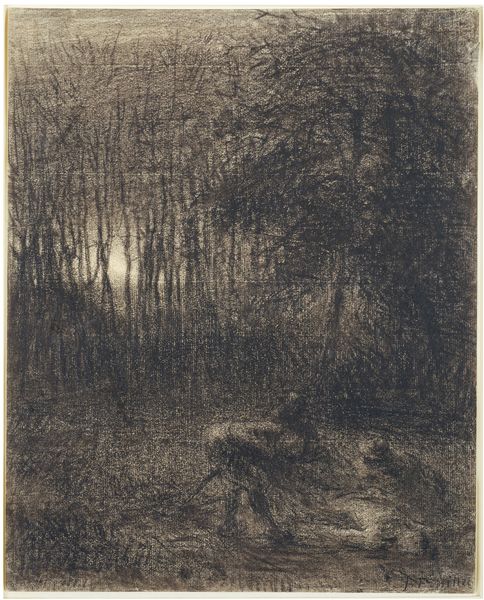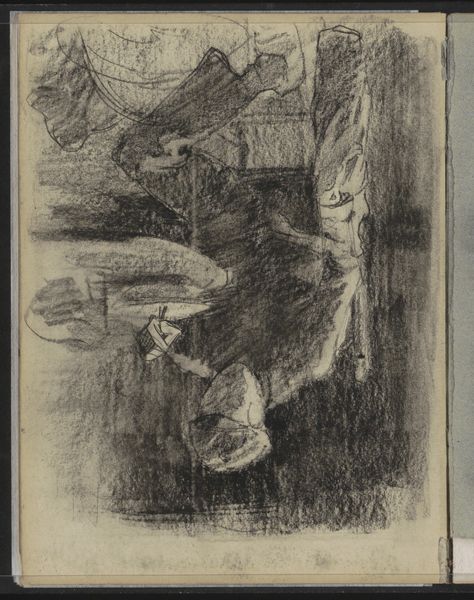
drawing, print, etching
#
drawing
# print
#
etching
#
landscape
#
realism
Dimensions: 210 mm (height) x 143 mm (width) (bladmaal)
Curator: This is "Skovrydning. Aften," or "Deforestation. Evening," an etching by Thorvald Niss, dating from around 1842 to 1905. It's currently held here at the SMK, Statens Museum for Kunst. Editor: Whoa, it’s like… bleak beauty. That lone figure with a staff, amidst the stumps and skeletal trees... It's giving me serious "end of the world" vibes, only rendered in miniature. A powerful little scene. Curator: Exactly. Niss lived during a period of immense transformation in Denmark, with increased industrialization impacting natural landscapes. The print points to growing anxieties around deforestation. It's also worth noting that landscape art served a nationalist agenda, and it becomes increasingly complex during this period with the shift to representing realistic conditions. Editor: That makes perfect sense. It's more than just trees; it’s a commentary. And there's a rawness here in the lines that gets under your skin. I can almost feel the damp air and the chill. Though small, there's so much to experience in it. You notice how high the horizon line is? Curator: Good point! That adds to the weight of the sky, the sense of oppression. But landscape etching and painting served as an archive of social history during this time as the urban world expanded to displace or integrate wilder environs. Also, consider the medium. Printmaking allowed wider distribution of his work and of his messages about conservation. Editor: See, for me, knowing that adds layers. That simple stick figure on the edge, that could be you, could be me... walking through our own consequences, trying to find our way through a world of chopped-down trees and poisoned atmospheres. It resonates, doesn't it? Curator: Absolutely. While Niss employs a certain degree of realism, we can now say that the piece, whether consciously or not, contributed to what is now contemporary awareness about how the world transforms on its own or is transformed through our societal practices. Editor: Well, I came in expecting just some trees, but I’m leaving with a little nudge of doom… and a strange kind of hopeful resolve to maybe, plant a tree or something. So, thank you for the extra dimensions! Curator: My pleasure. And thank you for drawing our attention to how historical artwork and ideas around conservation are still so relevant.
Comments
No comments
Be the first to comment and join the conversation on the ultimate creative platform.
